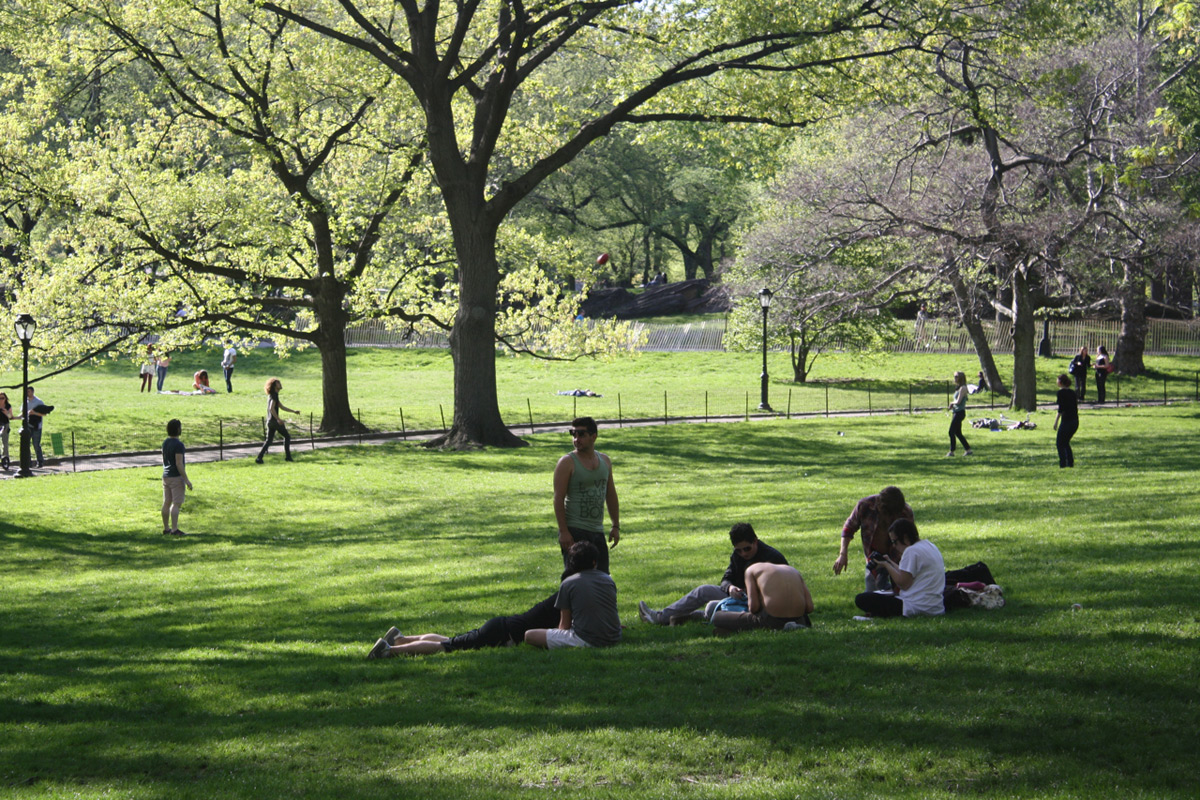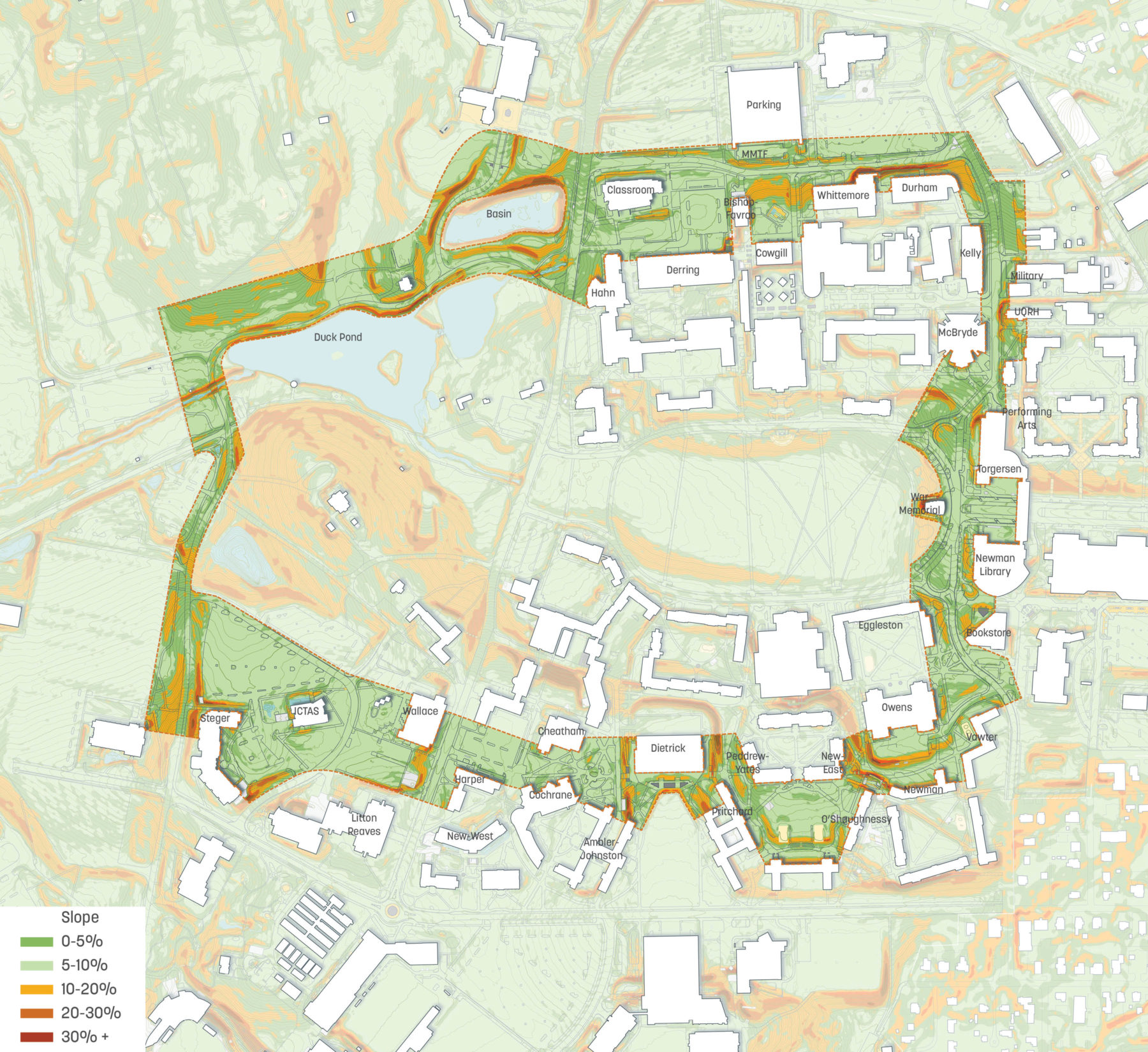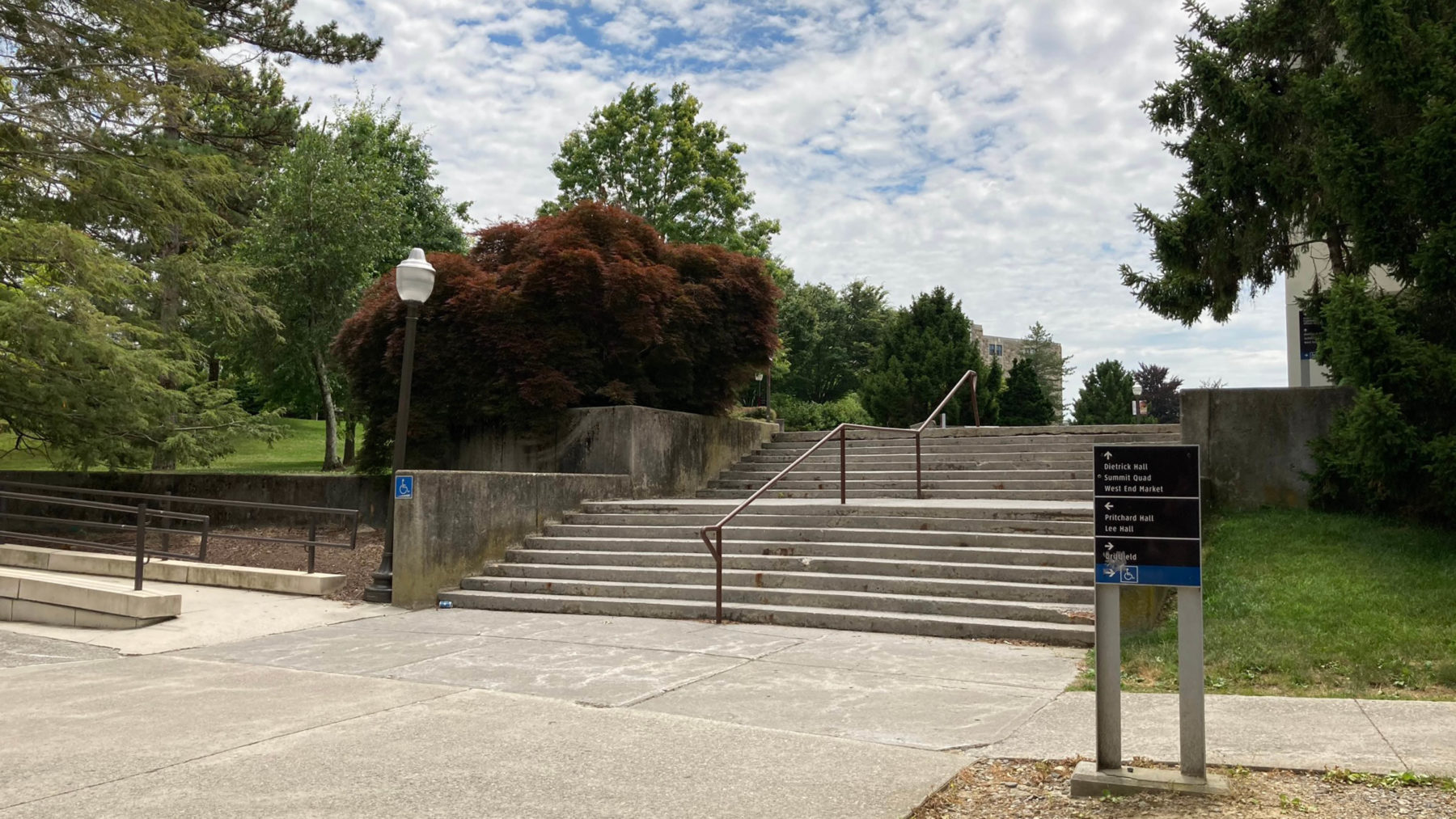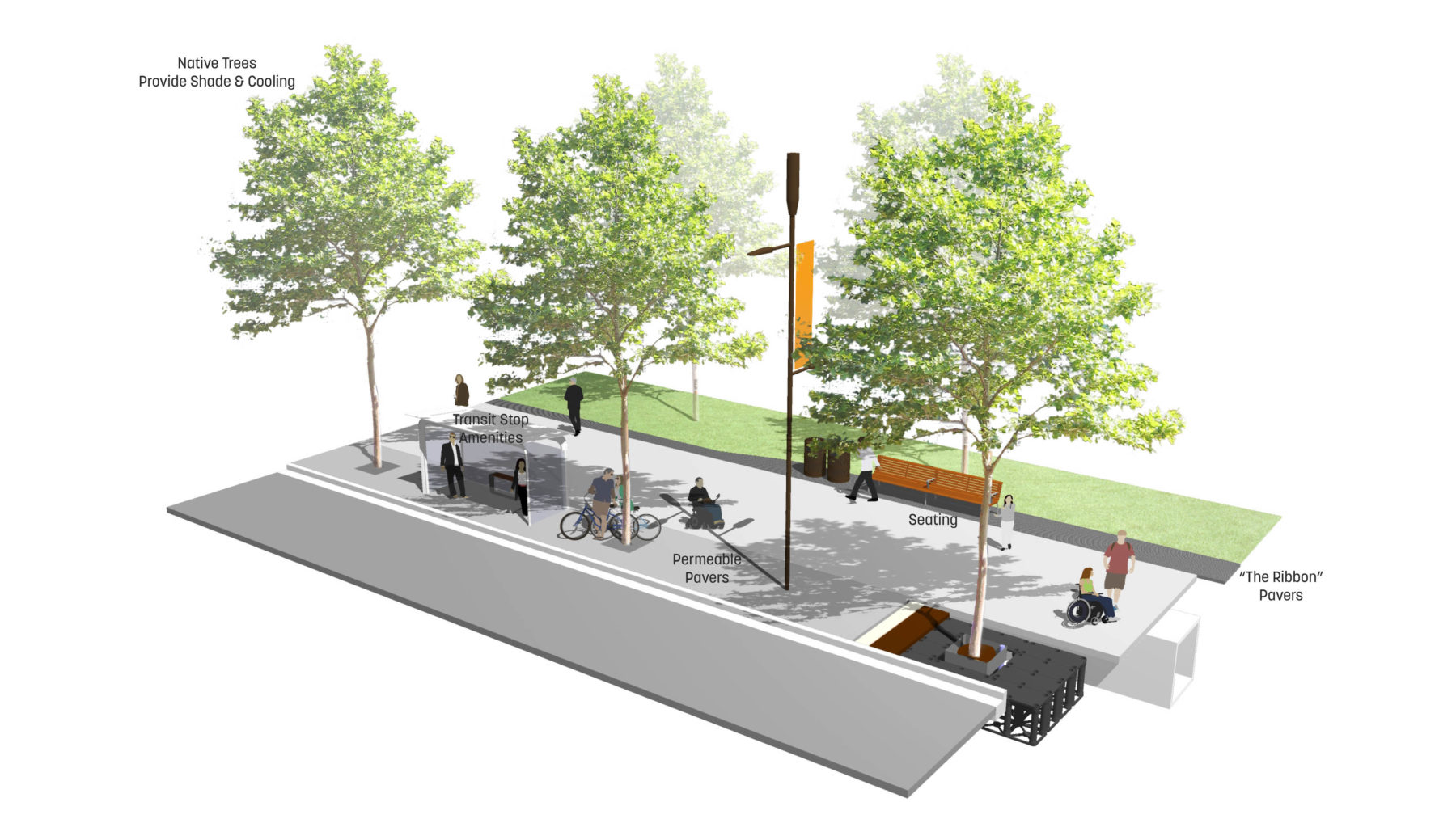Common Ground
Using these design methods, we can achieve a new, implementable landscape standard across Virginia Tech’s campus that celebrates equity and enjoyment for people of all abilities while still highlighting the unique qualities of the place. When entering a college or university campus, landscapes are the first thing people encounter. If we can make these landscapes accessible to everyone, we have the opportunity to shift the reputation of higher education from an ivory tower to a common ground, welcoming to all.
[1] Julia Africa, Cheri Ruane, Gary Hilderbrand, and Chris Reed, “Parks are essential — especially during the coronavirus pandemic,” Boston Globe, May 6, 2020, https://www.bostonglobe.com/2020/05/05/opinion/parks-are-essential-especially-during-coronavirus-pandemic/.
[2] Centers for Disease Control and Prevention, “Disability Impacts All of Us,” CDC website, page last reviewed September 9, 2019, https://www.cdc.gov/ncbddd/disabilityandhealth/infographic-disability-impacts-all.html#:~:text=61%20million%20adults%20in%20the,is%20highest%20in%20the%20South.
[3] The Institute for Human Centered Design, “History,” IHCD website, last accessed August 24, 2020, https://www.humancentereddesign.org/inclusive-design/history.
[4] US Department of Justice, “Introduction to the ADA,” ADA.gov, last accessed August 24, 2020, https://www.ada.gov/ada_intro.htm.
[5] For more information on the history of the disability movement: Maya Sabatello. “Chapter 1. A Short History of the International Disability Rights Movement.” Human Rights and Disability Advocacy, doi:10.9783/9780812208740.13.
[6] John Swain, et al., Disabling Barriers – Enabling Environments. SAGE, 2014.









